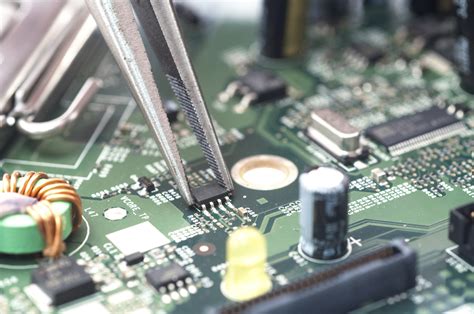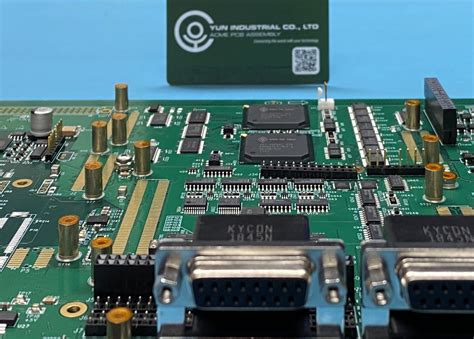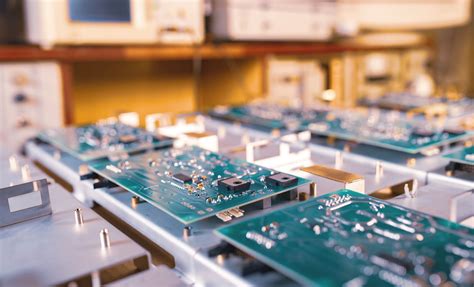What are PCB Assembly Variants?
PCB assembly variants refer to different versions of a printed circuit board (PCB) that share a common design but have slight variations in components, layout, or functionality. These variants are often created to cater to different market requirements, product features, or cost constraints. By utilizing PCB assembly variants, manufacturers can efficiently produce multiple versions of a product while minimizing design and production costs.
Common Types of PCB Assembly Variants
- Component Variations
- Different component values (e.g., resistors, capacitors)
- Alternative component packages (e.g., SMD vs. through-hole)
-
Upgraded or downgraded components (e.g., higher-rated capacitors)
-
Feature Variations
- Added or removed functionality (e.g., extra sensors, connectors)
- Different power supply options (e.g., battery vs. AC adapter)
-
Varying communication interfaces (e.g., USB, Ethernet, Wi-Fi)
-
Layout Variations
- Rearranged component placement for optimized space utilization
- Modified trace routing for improved signal integrity
-
Altered board shape or size to fit different enclosures
-
Manufacturing Variations
- Different solder mask or silkscreen colors for easy identification
- Alternate surface finishes (e.g., HASL, ENIG, OSP)
- Varying PCB materials (e.g., FR-4, high-speed laminates)
Benefits of Using PCB Assembly Variants
- Cost Savings
- Reduced design time and effort by sharing a common base design
- Lower component costs through bulk purchasing for multiple variants
-
Minimized tooling and setup costs in manufacturing
-
Faster Time-to-Market
- Quicker design iterations by modifying existing variants
- Streamlined production planning and scheduling
-
Simultaneous manufacturing of multiple variants
-
Flexibility and Customization
- Ability to cater to different customer requirements
- Easier to introduce new features or upgrades
-
Simplified product line management
-
Inventory Management
- Reduced inventory holding costs by sharing common components
- Easier to forecast and manage stock levels for each variant
- Flexibility to adjust production based on market demand

Preparing PCB Assembly Variants for Manufacturing
1. Defining Variant Requirements
Before creating PCB assembly variants, it is essential to clearly define the requirements for each version. This involves collaborating with various stakeholders, such as product management, engineering, and marketing teams, to identify the specific needs and features of each variant.
Consider the following factors when defining variant requirements:
- Target market and customer preferences
- Product functionality and performance expectations
- Cost constraints and pricing strategies
- Regulatory compliance and certifications
- Manufacturing capabilities and limitations
2. Creating a Master Design
Once the variant requirements are established, the next step is to create a master PCB design that serves as the foundation for all the variants. This master design should incorporate the common elements shared by all versions, such as the core functionality, power supply, and essential components.
When designing the master PCB, keep the following best practices in mind:
- Use modular design approaches to facilitate easy modifications for variants
- Implement consistent layout and component placement guidelines
- Follow design for manufacturability (DFM) principles to ensure smooth production
- Allow for sufficient space and routing options to accommodate variant-specific components
- Document the design thoroughly, including schematic diagrams, bill of materials (BOM), and layout files
3. Identifying Variant-Specific Components
With the master design in place, the next step is to identify the specific components that will be used in each variant. This involves creating a detailed BOM for each version, highlighting the differences from the master design.
Consider the following aspects when selecting variant-specific components:
- Functionality and performance requirements of each variant
- Availability and lead times of components
- Cost implications and impact on overall product pricing
- Compatibility with the master design and other components
- Reliability and quality of the selected components
It is essential to work closely with component suppliers and distributors to ensure the availability and continuity of supply for all variant-specific components.
4. Generating Assembly Documentation
To ensure accurate and efficient manufacturing of PCB assembly variants, it is crucial to generate comprehensive assembly documentation for each version. This documentation should provide clear instructions and guidelines for the assembly process, including:
- Assembly drawings and diagrams
- Bill of materials (BOM) for each variant
- Component placement and orientation information
- Solder paste stencil and solder mask specifications
- Assembly process flow and quality control checkpoints
- Testing and inspection requirements
The assembly documentation should be reviewed and validated by the manufacturing team to ensure clarity and feasibility before proceeding with production.
5. Configuring Manufacturing Systems
To streamline the manufacturing process for PCB assembly variants, it is essential to configure the production systems and equipment to handle the specific requirements of each version. This involves:
- Programming pick-and-place machines with variant-specific component data
- Updating solder paste printing parameters for different stencil designs
- Configuring automated optical inspection (AOI) systems to detect variant-specific defects
- Adapting testing and programming fixtures to accommodate variant differences
- Training production personnel on the unique aspects of each variant
By properly configuring the manufacturing systems, manufacturers can minimize changeover times, reduce errors, and improve overall production efficiency.
6. Managing Variant Inventory
Effective inventory management is crucial when dealing with multiple PCB assembly variants. It involves carefully planning and tracking the stock levels of both common and variant-specific components to ensure uninterrupted production and timely order fulfillment.
Consider the following strategies for managing variant inventory:
- Implement a robust inventory management system to monitor stock levels and trigger reorder points
- Analyze historical demand patterns and sales forecasts to optimize inventory holding
- Establish supplier agreements and lead time commitments for critical components
- Regularly review and update inventory policies based on market dynamics and product life cycles
- Implement just-in-time (JIT) manufacturing practices to minimize excess inventory and reduce carrying costs

Challenges and Considerations
While PCB assembly variants offer numerous benefits, there are also challenges and considerations that manufacturers must address:
- Design Complexity
- Ensuring compatibility and interoperability between variants
- Managing design revisions and version control
-
Maintaining clear and concise assembly documentation
-
Supply Chain Management
- Coordinating with multiple suppliers for variant-specific components
- Ensuring consistent quality and reliability across all variants
-
Managing lead times and minimizing supply disruptions
-
Quality Control
- Implementing robust quality assurance processes for each variant
- Conducting thorough testing and inspection to detect variant-specific issues
-
Establishing traceability and root cause analysis procedures
-
Cost Control
- Balancing the cost savings of shared components with the added expenses of variant-specific parts
- Optimizing production processes to minimize changeover times and reduce waste
- Continuously monitoring and analyzing cost drivers for each variant

Frequently Asked Questions (FAQ)
- How do I determine the optimal number of PCB assembly variants for my product?
-
The optimal number of variants depends on factors such as market demand, customer requirements, and manufacturing capabilities. It is essential to strike a balance between offering sufficient options to customers and maintaining manageable production complexity. Conduct market research, analyze sales data, and engage with customers to identify the most valuable and feasible variants.
-
Can I add new PCB assembly variants to an existing product line?
-
Yes, it is possible to introduce new variants to an existing product line. However, it is crucial to carefully assess the impact on manufacturing processes, supply chain, and inventory management. Evaluate the compatibility of the new variant with the existing master design, and ensure that the manufacturing systems and documentation are updated accordingly.
-
How can I ensure consistency and reliability across different PCB assembly variants?
-
Implementing robust quality control processes is key to maintaining consistency and reliability across variants. This includes thorough testing and inspection at various stages of production, as well as establishing clear quality standards and acceptance criteria. Regular supplier audits and incoming quality control checks can help ensure the consistency of variant-specific components.
-
What are the best practices for managing the supply chain for PCB assembly variants?
-
Effective supply chain management for variants involves close collaboration with suppliers, proactive communication, and regular performance monitoring. Establish long-term partnerships with reliable suppliers who can provide consistent quality and timely delivery. Implement a supplier rating system to track performance and identify improvement opportunities. Regularly review inventory levels and lead times to optimize stock holding and minimize disruptions.
-
How can I streamline the manufacturing process for PCB assembly variants?
- Streamlining the manufacturing process for variants requires a combination of careful planning, automation, and continuous improvement. Implement modular design approaches to minimize changeover times between variants. Utilize automated assembly equipment and configure them to handle variant-specific requirements efficiently. Establish standardized work instructions and training programs for production personnel. Regularly review and optimize production workflows to identify bottlenecks and improve overall efficiency.
Conclusion
PCB assembly variants offer manufacturers the flexibility to cater to diverse market requirements while maximizing design and production efficiency. By carefully defining variant requirements, creating a master design, and managing variant-specific components and processes, manufacturers can successfully prepare PCB assembly variants for manufacturing.
Effective management of PCB assembly variants involves close collaboration between design, manufacturing, and supply chain teams. By implementing best practices in design, documentation, inventory management, and quality control, manufacturers can overcome the challenges associated with variants and deliver high-quality products to their customers.
As the electronics industry continues to evolve and customer demands become more diverse, the ability to efficiently manage PCB assembly variants will be a critical success factor for manufacturers. By embracing the benefits and addressing the challenges of variants, manufacturers can stay competitive, reduce costs, and improve customer satisfaction in an increasingly dynamic market.

Leave a Reply